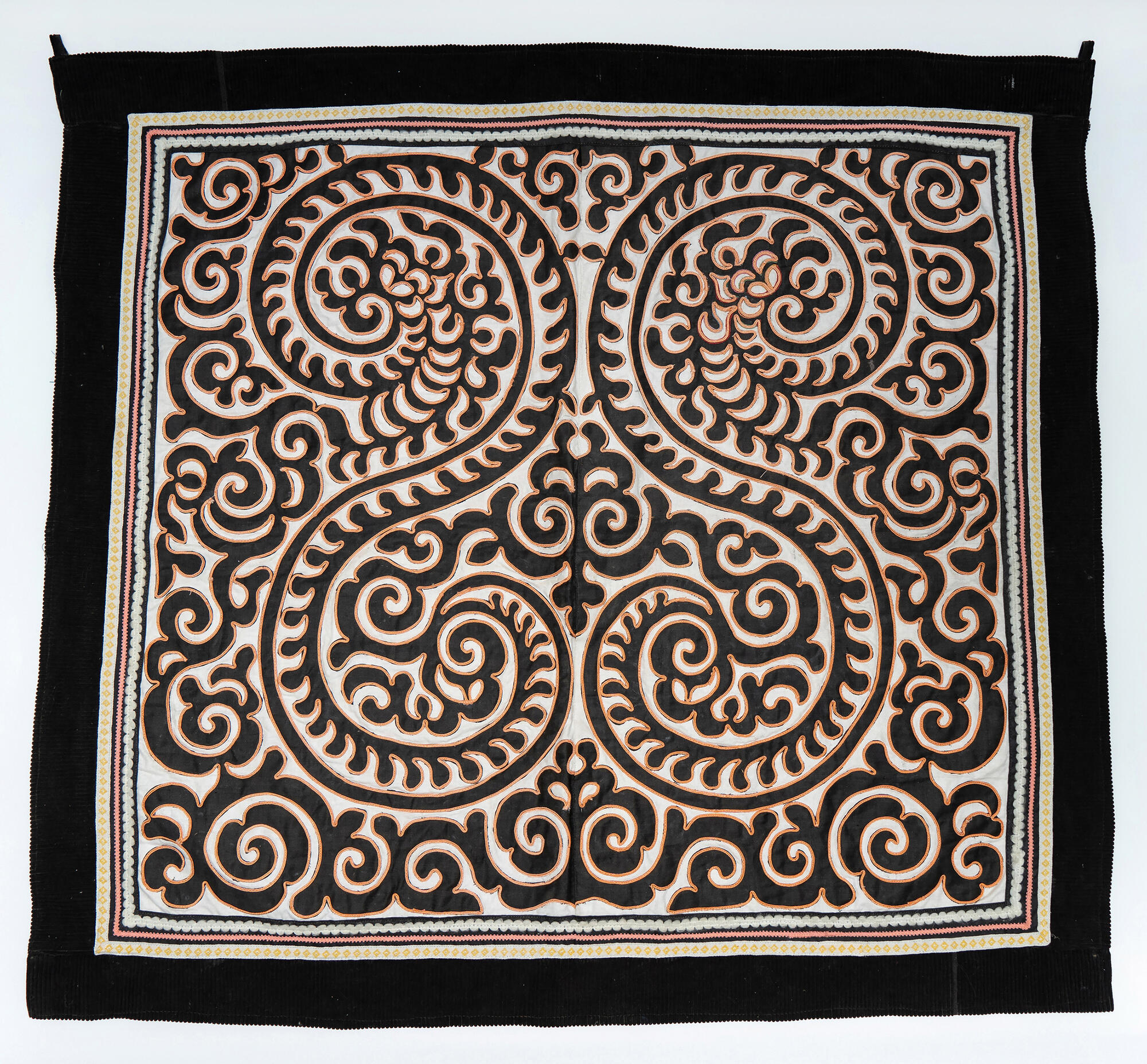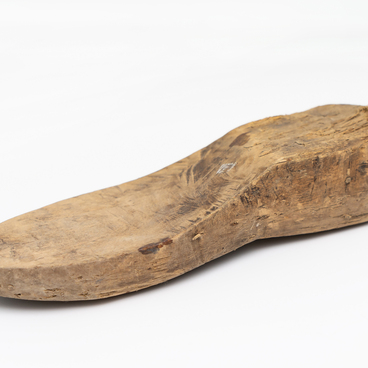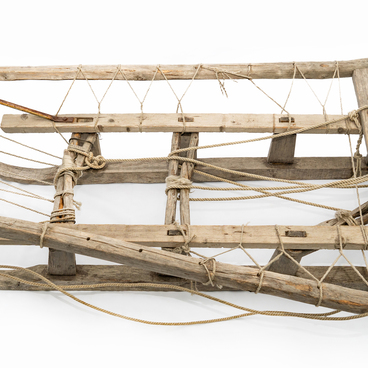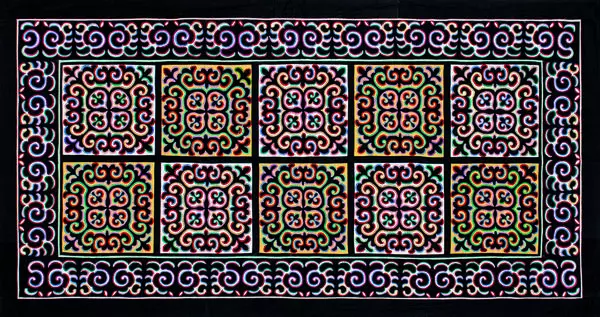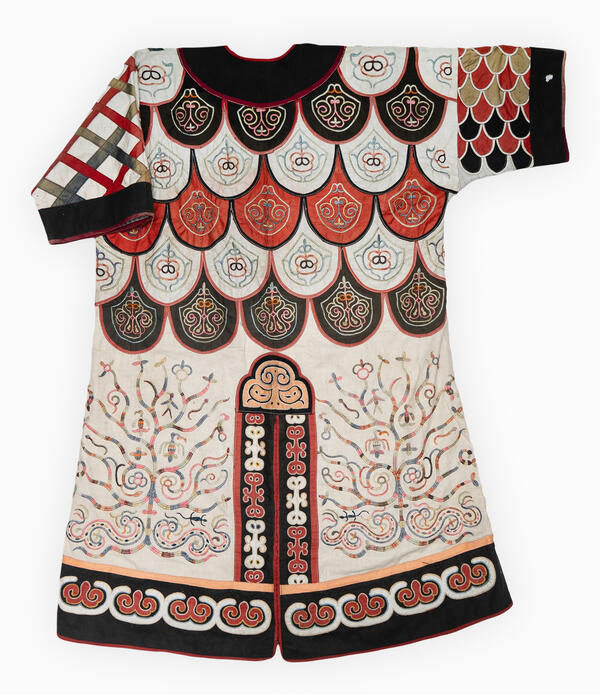The Nanai Mudura wall carpet was made by the famous craftswoman Chikue Zolongovna Kile in the second half of the 20th century. The basis of the square-shaped object is a white cotton fabric, on which the craftswoman made a pattern of black satin. After that, she hemmed the rug with yellow edging.
The central part of the pattern is two dragons (muduras), which Chikue Zolongonovna placed vertically and parallel to each other. She trimmed the edge with yellow, pink and white ribbon, as well as a wide strip of black velvet; the lining was made of colored white and red calico.
The Komsomolsk-on-Amur Museum of Local Lore bought this exhibit from the daughter of the Nanai craftswoman during an ethnographic expedition to the village of Dada in the Nanai district of the Khabarovsk Territory in 1984. The trip was headed by Galina Grigoryevna Telegina, a junior researcher at the museum.
Chikue Zolongovna Kile was born in 1890 in the Nanai village of Gordamo, which stood on one of the channels of the Amur River in the vicinity of the modern village of Naikhin. Her grandmother and mother were recognized craftswomen in the village. In 1975, Chikue Zolongovna was accepted as a member of the Artists’ Union. Her works represented the art of the indigenous peoples of the Amur region in Khabarovsk, Vladivostok, Leningrad, Moscow, as well as abroad.
A variety of materials were used to create Amur carpets: textiles, fur, bird skins, buckskin. Textile applique carpets appeared in Amur art not earlier than the 19th century, however, before that time, handiworks with an ornamental composition similar to a carpet had already existed in the traditional culture of the Amur ethnic groups. It was bedclothes, a mattress and a blanket. During the day, they were rolled up and laid along the walls with the decorated side up.
The interior of the Amur
aborigines’ dwelling did not provide a place for hanging textile carpets. The
walls were covered with narrow mats woven from split reeds. Textile carpets
became most widespread when the Amur peoples began to move into Russian-type
log houses, where they could hang carpets on the walls.
